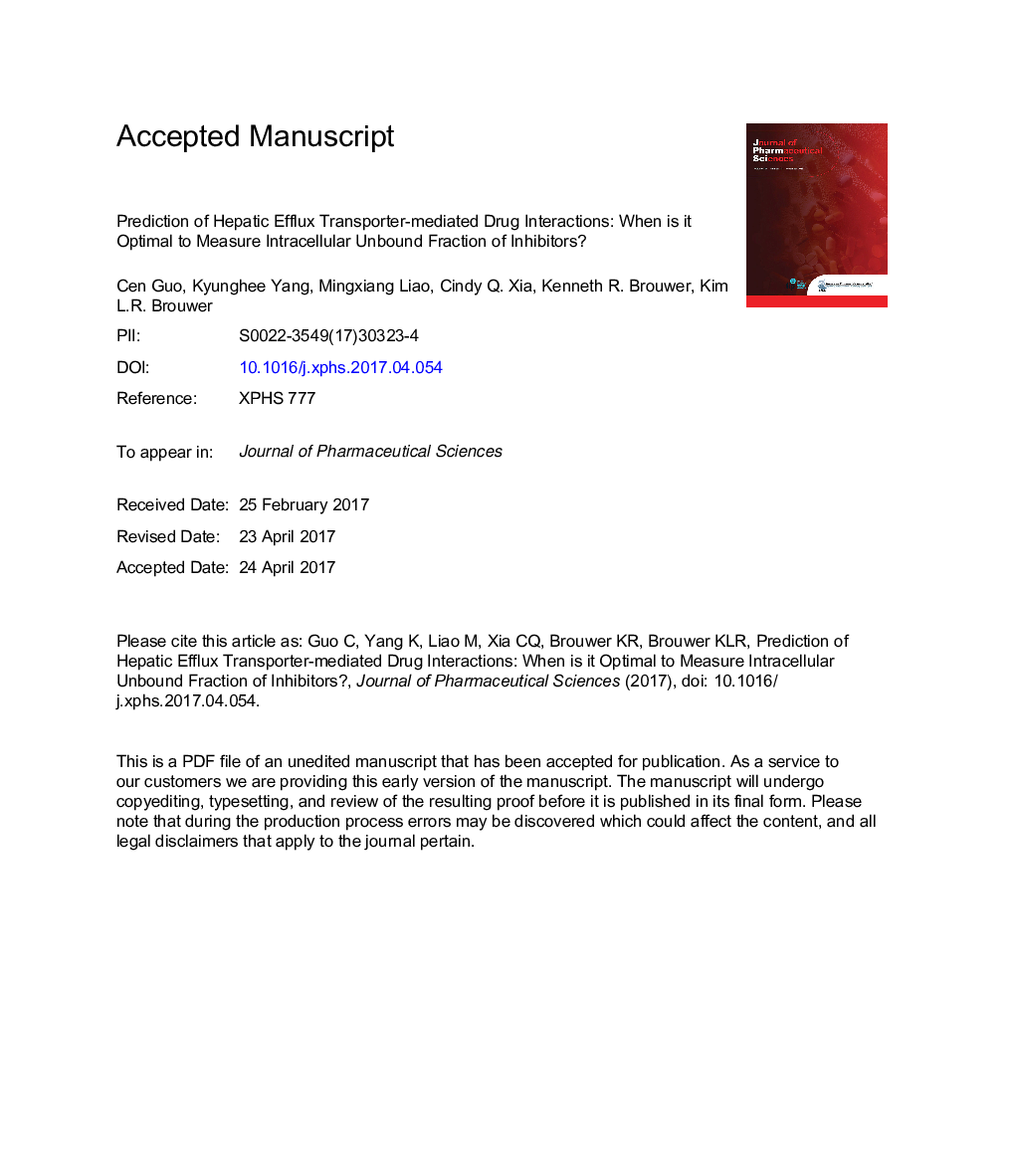| Article ID | Journal | Published Year | Pages | File Type |
|---|---|---|---|---|
| 8513929 | Journal of Pharmaceutical Sciences | 2017 | 18 Pages |
Abstract
The intracellular unbound inhibitor concentration ([I]unbound,cell) is the most relevant concentration for predicting the inhibition of hepatic efflux transporters. However, the intracellular unbound fraction of inhibitor in hepatocytes (fu,cell,inhibitor) is not routinely determined. Studies are needed to evaluate the benefit of measuring fu,cell,inhibitor and using [I]unbound,cell versus intracellular total inhibitor concentration ([I]total,cell) when predicting inhibitory effects. This study examined the benefit of using [I]unbound,cell to predict hepatocellular bile acid disposition. Cellular total concentrations of taurocholate ([TCA]total,cell), a prototypical bile acid, were simulated using pharmacokinetic parameters estimated from sandwich-cultured human hepatocytes. The effect of various theoretical inhibitors was simulated by varying ([I]total,cell/ half maximal inhibitory concentration [IC50]) values. In addition, the fold change was calculated as the simulated [TCA]total,cell when fu,cell,inhibitor = 1 divided by the simulated [TCA]total,cell when fu,cell,inhibitor = 0.5-0.01. The lowest ([I]total,cell/IC50) value leading to a >2-fold change in [TCA]total,cell was chosen as a cutoff, and a framework was developed to categorize risk inhibitors for which the measurement of fu,cell,inhibitor is optimal. Fifteen compounds were categorized, 5 of which were compared with experimental observations. Future work is needed to evaluate this framework based on additional experimental data. In conclusion, the benefit of measuring fu,cell,inhibitor to predict hepatic efflux transporter-mediated drug-bile acid interactions can be determined a priori.
Keywords
Related Topics
Health Sciences
Pharmacology, Toxicology and Pharmaceutical Science
Drug Discovery
Authors
Cen Guo, Kyunghee Yang, Mingxiang Liao, Cindy Q. Xia, Kenneth R. Brouwer, Kim L.R. Brouwer,
